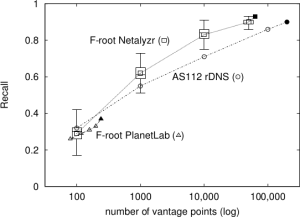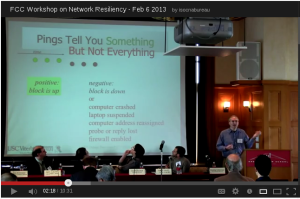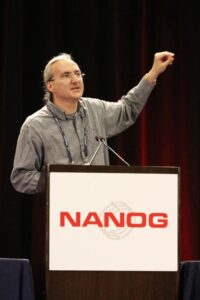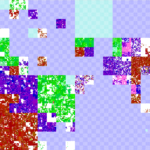The paper “Evaluating Anycast in the Domain Name System” (prevoiusly available at http://www.isi.edu/~xunfan/research/Fan13a.pdf) was accepted to appear at the IEEE International Conference (INFOCOM) on Computer Communications 2013 in Turin, Italy.

From the abstract:
IP anycast is a central part of production DNS. While prior work has explored proximity, affinity and load balancing for some anycast services, there has been little attention to third-party discovery and enumeration of components of an anycast service. Enumeration can reveal abnormal service configurations, benign masquerading or hostile hijacking of anycast services, and help characterize anycast deployment. In this paper, we discuss two methods to identify and characterize anycast nodes. The first uses an existing anycast diagnosis method based on CHAOS-class DNS records but augments it with traceroute to resolve ambiguities. The second proposes Internet-class DNS records which permit accurate discovery through the use of existing recursive DNS infrastructure. We validate these two methods against three widely-used anycast DNS services, using a very large number (60k and 300k) of vantage points, and show that they can provide excellent precision and recall. Finally, we use these methods to evaluate anycast deployments in top-level domains (TLDs), and find one case where a third-party operates a server masquerading as a root DNS anycast node as well as a noticeable proportion of unusual DNS proxies. We also show that, across all TLDs, up to 72% use anycast.
Citation: Xun Fan, John Heidemann and Ramesh Govindan. Evaluating Anycast in the Domain Name System. To appear in Proceedings of the IEEE International Conference on Computer Communications (INFOCOM). Turin, Italy. April, 2013. http://www.isi.edu/~johnh/PAPERS/Fan13a.html





